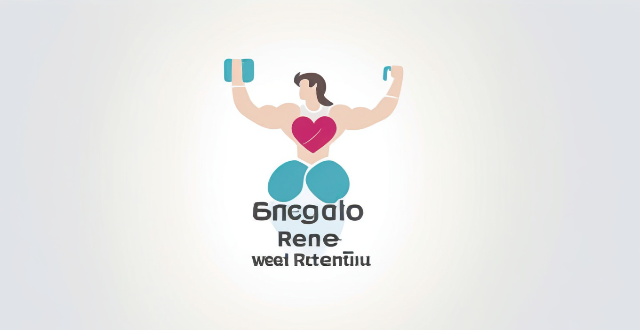Exercise Weight

Can aerobic exercise help me lose weight ?
Aerobic exercise, or cardio, is an effective way to lose weight. It increases heart rate and breathing, leading to higher calorie burn during and after the workout. Moderate-intensity aerobic activities also use fat as fuel, improving metabolic rate for further calorie expenditure at rest. Regular cardio can strengthen heart muscles for efficient blood pumping and contribute to muscle endurance. Types of aerobic exercises include running, cycling, swimming, walking, and group fitness classes like Zumba. To successfully incorporate aerobic exercise into a weight loss plan, it's recommended to start slowly, mix up activities, stay consistent, and combine with strength training. Potential challenges such as overexertion and plateaus in progress should be managed by adjusting routines. Overall, aerobic exercise can aid in weight loss when part of a balanced fitness regimen.

Is weight-bearing exercise really necessary for bone health ?
Weight-bearing exercises are often recommended for maintaining bone health, but is it really necessary? Let's explore this topic in detail. Weight-bearing exercises include any activity that requires you to carry your own body weight, such as walking, jogging, dancing, climbing stairs, and weightlifting. These exercises can help strengthen bones and muscles, improve balance and coordination, and reduce the risk of falls. Maintaining healthy bones is crucial for overall health and well-being. Strong bones provide support and protection for your body, allowing you to move with ease and perform daily activities without pain or discomfort. Additionally, having strong bones can help prevent fractures and other injuries. Weight-bearing exercises have numerous benefits on bone health, including stimulating bone growth, improving bone density, reducing the risk of falls and injuries, and promoting overall health and well-being. However, there are some alternatives to weight-bearing exercise that may be beneficial for people who cannot engage in these types of activities. These include resistance training, yoga or Pilates, and swimming. In conclusion, weight-bearing exercises are highly recommended for maintaining bone health due to their numerous benefits on bone growth, density, and overall health and well-being. However, there are alternative exercises that may be beneficial for people who cannot engage in weight-bearing activities. It's always best to consult with a healthcare professional before starting any new exercise program.

What are some common misconceptions about weight loss and exercise ?
This text discusses common misconceptions about weight loss and exercise, including the idea that skipping meals leads to weight loss, spot reduction is effective, more exercise equals more weight loss, weight training makes women bulky, cardio is the best way to lose weight, fad diets offer quick fixes, all calories are created equal, and you can out-exercise a bad diet. It emphasizes the importance of understanding these misconceptions to adopt healthier habits and set realistic goals for improved health and wellness.

How often should I exercise to see weight loss results ?
To see weight loss results, start with low-intensity workouts and gradually increase intensity over time. Aim for at least 150 minutes of moderate-intensity exercise per week, mix up your workouts, and incorporate strength training. Consistency is key!

Is it possible to lose weight without doing any exercise ?
Losing weight without exercise is a topic of interest for many individuals who want to shed pounds but may not have the time, ability, or desire to engage in physical activities. While exercise has numerous health benefits and can significantly aid in weight loss, it's not the only factor that influences your body weight. Here are several ways you might lose weight without traditional forms of exercise: - Dietary Changes: Eating a calorie-deficient diet, focusing on whole foods, practicing portion control, using smaller plates, limiting processed foods and sugars, and reading labels for serving sizes and calorie counts. - Lifestyle Changes: Increasing Non-Exercise Activity Thermogenesis (NEAT) by being more active in daily life, improving sleep habits by establishing a sleep routine, and managing stress levels through meditation, deep breathing exercises, and yoga. - Behavioral Changes: Keeping a food diary, setting realistic goals with small, sustainable changes, seeking professional advice from a registered dietitian or nutritionist, and creating personalized plans based on unique health profiles and preferences.

Can yoga help with weight loss ?
Yoga can be a valuable addition to a weight loss program due to its ability to improve muscle tone, increase flexibility, reduce stress levels, and promote mindful eating habits. Incorporating yoga into your routine along with other forms of exercise and healthy lifestyle habits can help you achieve your weight loss goals and improve overall health and well-being.

What kind of diet is recommended for women who want to lose weight through exercise ?
Recommended diet for women who want to lose weight through exercise includes lean protein, complex carbohydrates, healthy fats, and plenty of water. It's important to eat a light meal or snack before workouts and refuel with protein and carbohydrates after exercising. Portion control and avoiding empty calories are also crucial for weight loss success.

What are the best exercises for weight loss ?
Losing weight requires a combination of a healthy diet and regular exercise. The best exercises for weight loss include cardiovascular exercises like running, cycling, swimming, and jumping rope; strength training exercises like squats, lunges, push-ups, and planks; and high-intensity interval training (HIIT) workouts like Tabata, burpees, and mountain climbers. By incorporating these exercises into your routine, you can burn calories, build muscle, and improve your overall fitness level.

How much weight can I expect to lose by exercising regularly ?
The amount of weight you can expect to lose through exercise depends on several factors, including your current weight, body composition, and the type and intensity of exercise you perform. High-intensity interval training (HIIT) and strength training are generally more effective for weight loss than low-impact activities like yoga or walking. In the short term, you may experience significant weight loss due to water loss and increased muscle tone, but for long-term weight loss, regular exercise combined with a healthy diet is essential. To maximize your weight loss potential through exercise, incorporate strength training, vary your workouts, increase intensity gradually, and stay consistent.

What's wrong with the belief that cardio is the best way to lose weight ?
This critical analysis challenges the prevailing belief that cardio exercises are the most effective way to lose weight. It argues that this belief is misguided due to an overemphasis on calorie burning, neglect of other forms of exercise, potential for overuse injuries, and limited sustainability and enjoyment. The analysis suggests a well-rounded fitness routine that includes strength training, flexibility exercises, and other forms of physical activity to support overall health, prevent injuries, and ensure long-term success in maintaining a healthy weight.

Can fitness trackers help me achieve my weight loss goals ?
Fitness trackers can support weight loss by tracking steps, heart rate, sleep, and calories. They provide motivation, accountability, and data for decision making. However, they have limitations such as overreliance on technology and accuracy concerns. It's important to use them wisely and in conjunction with other healthy habits for effective weight loss.

Can people with osteoporosis still do exercise safely ?
Osteoporosis is a condition characterized by low bone mass and deterioration of bone tissue, leading to brittle bones that are prone to fractures. It is a common concern among older adults, especially women. While exercise is generally recommended for maintaining overall health, it is important to consider the safety of physical activity for individuals with osteoporosis. In this article, we will explore whether people with osteoporosis can still do exercise safely and what precautions should be taken. Is Exercise Safe for People with Osteoporosis? Benefits of Exercise for Osteoporosis: - Improved Bone Density: Regular weight-bearing exercises can help improve bone density in individuals with osteoporosis. - Increased Strength and Balance: Resistance training and balance exercises can enhance muscle strength and reduce the risk of falls. - Better Quality of Life: Engaging in physical activities can improve mood, reduce pain, and enhance overall well-being. Risks Associated with Exercise for Osteoporosis: - Fracture Risk: High-impact activities or excessive force during exercise may increase the risk of fractures in people with osteoporosis. - Joint Stress: Some exercises may put excessive stress on joints, potentially leading to joint pain or damage. Safe Exercises for People with Osteoporosis: Weight-Bearing Exercises: - Walking: A low-impact activity that can help maintain bone density. - Dancing: A fun way to engage in weight-bearing exercise while also improving balance. Resistance Training: - Light Weight Lifting: Using light weights or resistance bands can strengthen muscles without putting too much strain on bones. - Bodyweight Exercises: Squats, lunges, and step-ups can be modified to suit individual abilities and provide resistance training benefits. Flexibility and Balance Exercises: - Tai Chi: A gentle form of exercise that focuses on slow, flowing movements to improve balance and flexibility. - Yoga: Certain yoga poses can help enhance flexibility, balance, and strength, but it is essential to avoid high-impact or bending poses that may increase fracture risk. Precautions to Take During Exercise: 1. Consult with a Healthcare Professional: Before starting any exercise program, it is crucial to consult with a healthcare professional who can assess your individual needs and risks. 2. Start Slowly: Begin with low-intensity exercises and gradually increase the duration and intensity as your body adapts. 3. Use Proper Technique: Ensure proper alignment and technique during exercises to minimize the risk of injury. 4. Wear Appropriate Footwear: Choose shoes with good support and cushioning to reduce the impact on joints and bones. 5. Avoid High-Impact Activities: Steer clear of activities like jumping or running that may increase the risk of fractures. 6. Listen to Your Body: If you experience pain or discomfort during exercise, stop immediately and seek advice from a healthcare professional. 7. Incorporate Rest Days: Allow your body time to recover between exercise sessions by including rest days in your routine.

Can strength training help with weight loss ?
Strength training, involving the use of resistance to induce muscular contraction and build strength, can significantly contribute to weight loss by increasing metabolic rate, boosting post-exercise oxygen consumption (EPOC), improving body composition, and enhancing appetite control. Incorporating strength training into your routine, starting slowly and focusing on compound movements while staying consistent, can help achieve weight loss goals.

Can running help me lose weight quickly ?
Running is a popular form of exercise that can help you lose weight quickly, but it's important to understand the factors that contribute to weight loss and how running fits into the equation. In this response, we'll explore the benefits of running for weight loss and provide tips on how to maximize your results. Benefits of Running for Weight Loss: 1. Burns Calories: Running is a high-intensity cardio workout that burns a significant number of calories per minute. The more calories you burn during exercise, the easier it is to create a calorie deficit, which is necessary for weight loss. 2. Increases Metabolism: Running can boost your metabolism, allowing you to burn more calories even when you're not exercising. This increased metabolic rate can lead to faster weight loss over time. 3. Builds Muscle: Running helps build lean muscle mass in your legs, glutes, and core. Muscle tissue burns more calories at rest than fat tissue, so having more muscle can contribute to faster weight loss. Tips for Maximizing Weight Loss with Running: 1. Set Realistic Goals: Aim for a healthy rate of weight loss, such as 1-2 pounds per week. Rapid weight loss can be harmful and difficult to maintain in the long term. 2. Combine Cardio and Strength Training: Incorporate strength training exercises into your routine to build muscle and increase your overall calorie burn. Focus on compound movements like squats, lunges, and deadlifts to target multiple muscle groups at once. 3. Stay Consistent: Make running a regular part of your routine, aiming for at least 3-4 sessions per week. Consistency is key to achieving long-term weight loss goals. 4. Watch Your Diet: Pay attention to what you eat and try to consume a balanced diet rich in whole foods, lean proteins, and healthy fats. Avoid processed foods, sugary drinks, and excessive amounts of alcohol, which can hinder weight loss efforts. 5. Rest and Recovery: Allow your body time to rest and recover between running sessions to prevent injury and avoid burnout. Incorporate stretching and foam rolling into your routine to aid recovery and improve flexibility. Conclusion: While running can be an effective way to lose weight quickly, it's important to approach your fitness journey with patience and realistic expectations. By combining running with strength training, watching your diet, and staying consistent with your workouts, you can maximize your weight loss results and achieve a healthier lifestyle.

Can engaging in sports help with weight management ?
Engaging in sports can help with weight management by increasing calorie burn, improving metabolism, increasing muscle mass, reducing the risk of obesity-related diseases, and providing mental health benefits. However, a healthy diet and lifestyle habits are also essential for long-term success.

How does weight influence a woman's fertility ?
Fertility can be affected by weight, with both underweight and overweight conditions presenting challenges. Underweight may lead to hormonal imbalances, disrupting ovulation and menstrual regularity, while overweight or obese women might face issues like PCOS, endocrine disruptions, and inflammation. Maintaining a healthy weight is crucial for optimal fertility, supporting regular ovulatory cycles, improved hormonal balance, and better pregnancy outcomes. Tips for managing weight include consulting healthcare professionals, following a balanced diet, exercising regularly, managing stress, avoiding crash diets, and monitoring menstrual cycles.

How many calories should I burn to lose weight ?
To lose weight, you need to create a calorie deficit by burning more calories than you consume. Your calorie needs depend on several factors, including your age, gender, height, weight, and activity level. Increasing physical activity, eating a healthy diet, drinking plenty of water, and getting enough sleep can help you create a calorie deficit and lose weight successfully. Tracking your progress through food diaries, weighing yourself regularly, taking measurements, and setting realistic goals can help you stay motivated and focused on your weight loss journey.

How can health management apps be used to support weight loss goals and promote healthy habits ?
The text discusses the role of health management apps in supporting weight loss goals and promoting healthy habits. It highlights three key features: tracking progress, making informed decisions, and developing healthy habits. The apps offer real-time data on calorie intake, exercise activity, body measurements, and provide information about diet and exercise routines. They also promote healthy habits beyond weight loss, such as drinking water, taking breaks from sitting, meditation, and sleep tracking. Overall, these apps provide users with tools to achieve their desired outcomes and maintain a balanced lifestyle.

What types of workouts are most effective for weight management ?
The most effective workouts for weight management include aerobic exercise, strength training, high-intensity interval training (HIIT), flexibility and stability training, and combination workouts. Aerobic exercises are great for burning calories and improving cardiovascular health, while strength training helps increase metabolism and prevent injury. HIIT is incredibly effective at burning calories in a short amount of time and boosting metabolism. Flexibility and stability training focus on improving range of motion, balance, and core strength. Combination workouts incorporate multiple types of exercise into one session, providing the benefits of each while keeping workouts interesting and challenging. The most effective workout for weight management is one that you enjoy and can stick to consistently over time, paired with a healthy diet for optimal results.

Can organic food help with weight loss ?
Organic food may aid weight loss by reducing exposure to harmful chemicals, offering higher nutrient content, having lower calorie density, and improving digestion. Incorporating organic options slowly, choosing locally grown produce, reading labels carefully, planning meals, and including protein sources can support a healthy eating plan conducive to weight loss.

Patients with fatty liver should exercise reasonably and choose the most suitable exercise for themselves

Can exercise reverse heart disease ?
Heart disease is a major cause of death worldwide, and it can be devastating to those affected. While there are many treatments available for heart disease, including medication and surgery, some people wonder if exercise can reverse the damage caused by heart disease. There is evidence that regular exercise can help prevent and manage heart disease by improving cardiovascular health, managing weight, lowering blood pressure, improving cholesterol levels, and reducing stress. However, there is no conclusive evidence that exercise can completely reverse heart disease. Despite this, there are still many benefits to regular exercise for heart health. If you have been diagnosed with heart disease or are at high risk for developing it, talk to your doctor about starting an exercise program. They can help you create an exercise plan that is safe and effective for your individual needs and goals.

What are the benefits of aerobic exercise ?
Aerobic exercise, also known as "cardio," is a form of physical activity that increases your heart and breathing rate. It's any activity that keeps large muscles moving in a rhythmic manner for an extended period of time. Some examples include brisk walking, jogging, swimming, cycling, and dancing. The key benefits of aerobic exercise include improved heart health, weight management, boosted immune system, improved lung function, reduced stress, improved sleep, boosted mood, increased brain volume, slowed age-related cognitive decline, improved stamina, enhanced bone health, and promoted longevity. Incorporating aerobic exercise into your lifestyle can greatly improve your quality of life.

How much weight should I lift during strength training ?
The amount of weight you should lift during strength training depends on various factors such as your fitness level, goals, and experience. Here are some guidelines to help you determine the appropriate weight for your routine: start with a light weight, increase gradually, choose the right number of repetitions, listen to your body, and consider your goals. Remember to consult with a fitness professional or personal trainer to develop a customized program that meets your specific needs and goals.

Can exercise prevent osteoporosis ?
Exercise plays a crucial role in maintaining healthy bones by increasing bone density and strength. Effective exercises for preventing osteoporosis include weight-bearing exercises, strength training, balance exercises, high-impact exercises, and flexibility exercises. Incorporating these exercises into your routine can help reduce the risk of osteoporosis and maintain strong bones throughout your life.

Can aerobic exercise improve my cardiovascular health ?
Aerobic exercise is essential for maintaining and improving cardiovascular health, offering benefits such as strengthened heart muscle, lowered blood pressure, increased HDL cholesterol, reduced inflammation, weight management, improved circulation, and better blood sugar regulation. Regular aerobic activities like walking, jogging, cycling, swimming, or group fitness classes can significantly enhance overall heart health. The American Heart Association recommends at least 150 minutes of moderate-intensity aerobic exercise weekly, spread throughout the week, to achieve these benefits.